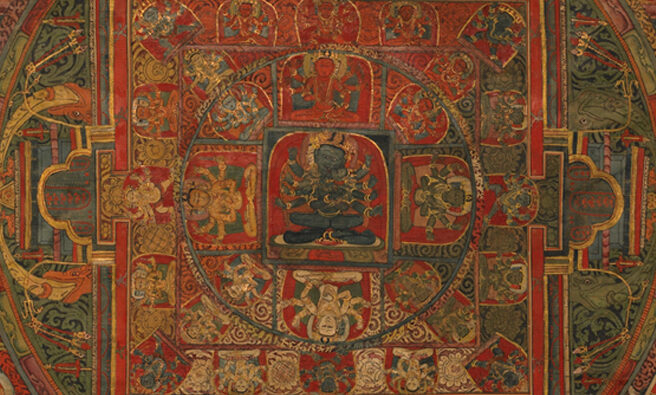


In the final week of The Rubin Daily Offering, artists with ties to the Himalayan region share creative practices that inspire their work, inviting us to think creatively and collaboratively.
In this episode, Rubin Museum Executive Director Jorrit Britschgi describes the mandala of Guhyasamaja Akshobhyavajra, exploring how mandalas are used as a meditative tool and means to contemplate emptiness. Artist Palden Weinreb then explores how meditation and mantra guided his early practice.
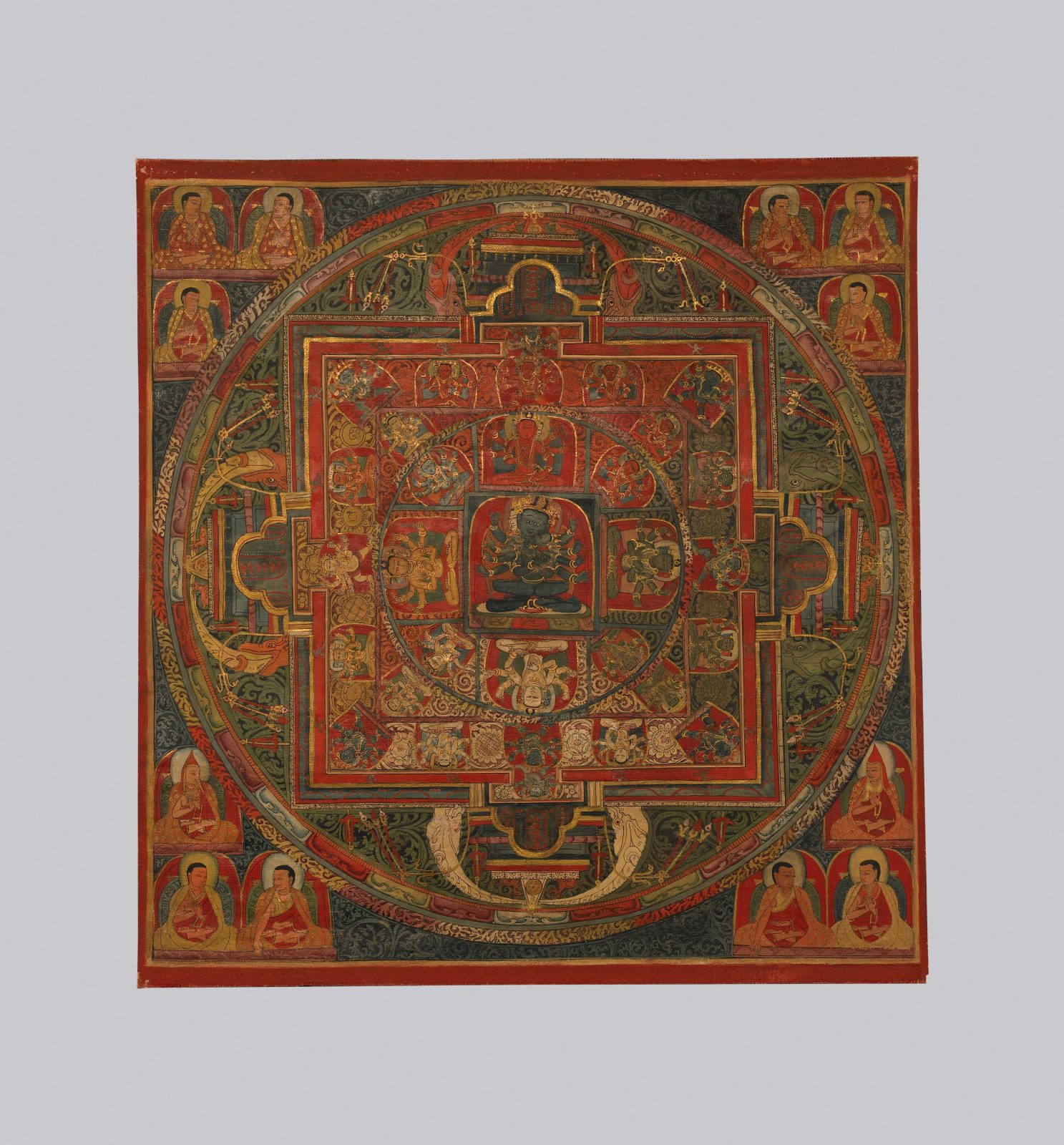
Mandala of Guhyasamaja-Akshobhyavajra; Tibet; 14th century; Pigments on cloth; Rubin Museum of Himalayan Art, gift of the Shelley and Donald Rubin Foundation; F1997.43.1
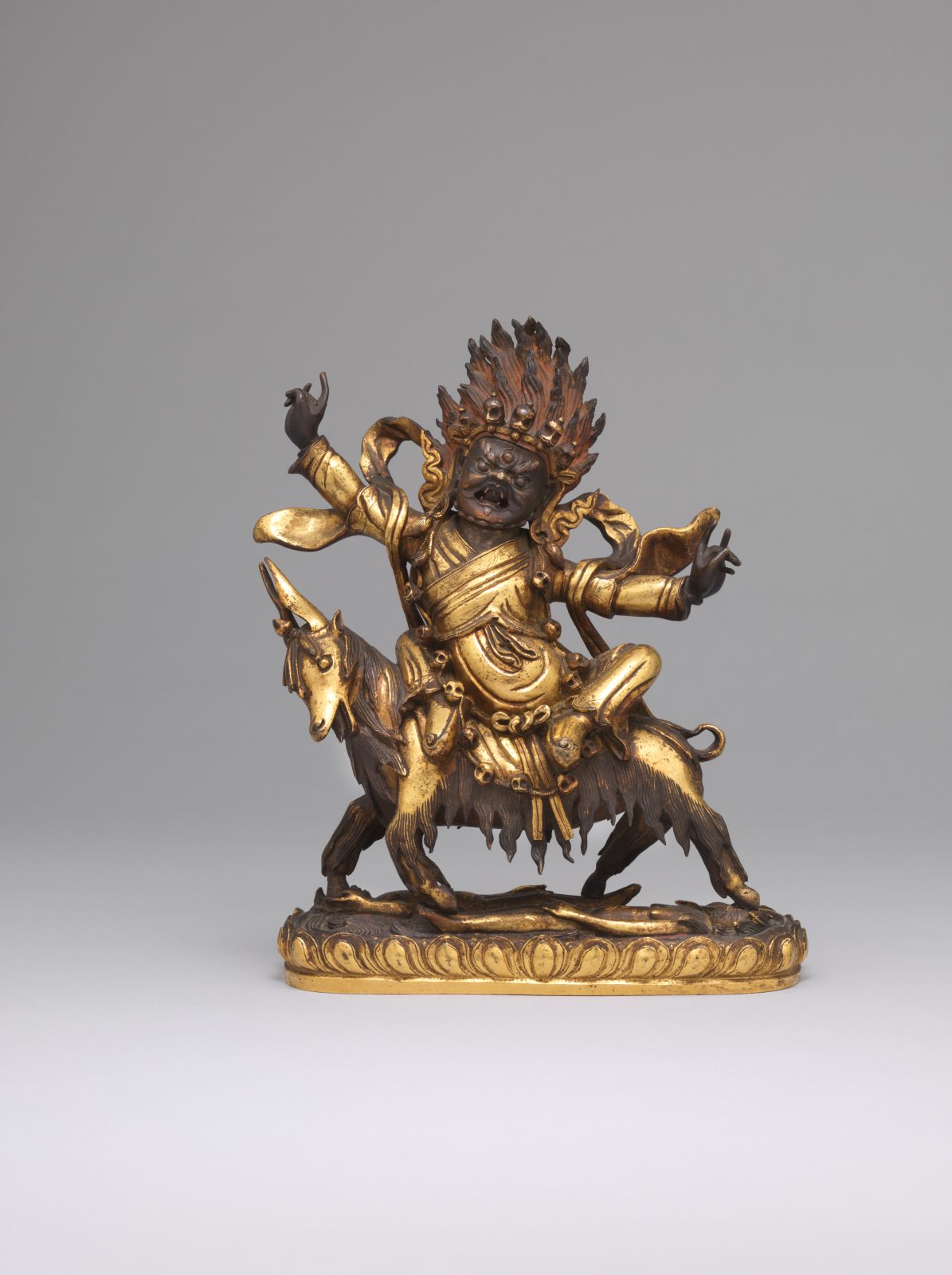
Damchen Garwai Nakpo; China; ca. 18th century; Gilt brass; Rubin Museum of Himalayan Art; C2005.16.65
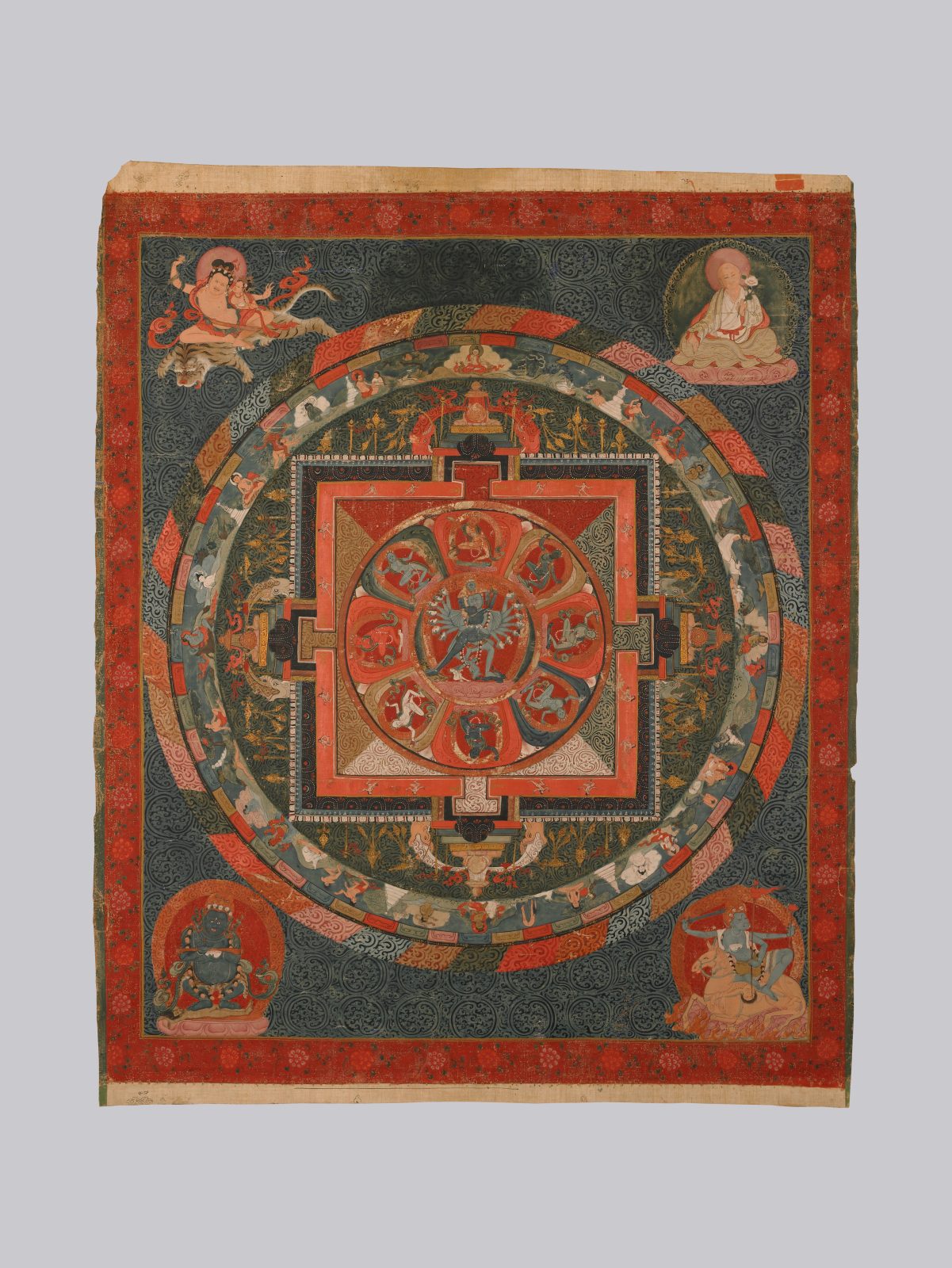
Mandala of Hevajra; Tsang Province, Central Tibet; 17th century; Pigments on cloth; Rubin Museum of Himalayan Art, gift of the Shelley and Donald Rubin Foundation; F1996.1.8
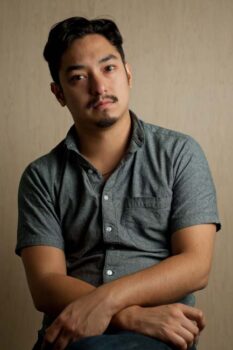
Palden Weinreb is a multimedia artist who lives in New York. His work often borrows from Tibetan Buddhism, New Age theory, utopian modernism, and science, in tune with his search for elusive transcendental phenomena surrounding modern life.
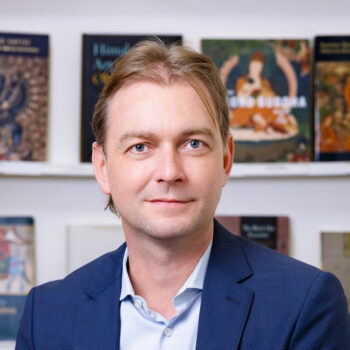
Jorrit Britschgi has served as the Rubin Museum’s Executive Director since 2017. Before joining the Rubin, he served as Head of Exhibitions and Publications at the Museum Rietberg in Zurich, Switzerland, where he was manager of the exhibitions program and curated numerous exhibitions. Mr. Britschgi also served as publisher of Artibus Asiae, one of the leading scholarly journals in Asian art and archaeology, for over a decade.
Jorrit Britschgi graduated from Zurich University with an MA in art history and Sinology (2005) and a PhD, with highest honors, in East Asian Art History (2009). Besides his research activities, he’s taken part in archaeological excavations in Eastern China and Bhutan, and curated numerous exhibitions on paintings from the Indian Himalayan region. Mr. Britschgi has received grants from federal and private foundations to pursue his studies and research. He is a 2017 alumni of the Getty Leadership Institute, and shares his expertise in an advisory capacity with other museums and individuals.
Get the latest news and stories from the Rubin, plus occasional information on how to support our work.